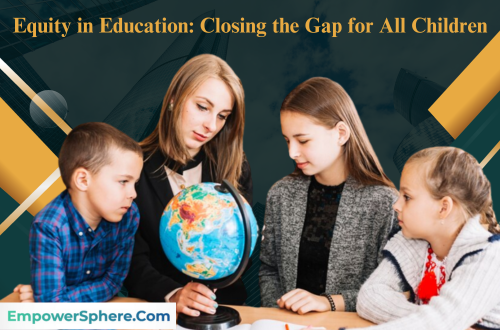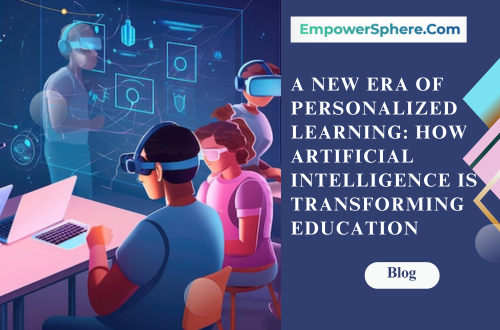The initial five years of a child’s life play a vital role in their development. In this phase, children learn rapidly, forming the base for their future academic and life abilities. However, this period also poses a significant risk, especially for kids from underprivileged backgrounds. These children are at a higher risk of inadequate early education, adversely affecting their academic achievements, professional prospects and community participation.
Equity in education is centered on providing necessary support to those children who may require extra assistance. The objective is to create a level playing field, ensuring that every child has equal opportunities to thrive irrespective of their socio-economic background. By providing impartial education, we can nurture well-informed and educated individuals who will play a significant role in building more prosperous economies and enduring societies in the times ahead.
Understanding the Learning Gaps at Age Five
Children from needy households may experience developmental differences compared to advantaged families. These differences can include:
- Delays in mental flexibility
- Socio-emotional skills
- Emergent literacy
It’s important to note that the gaps in indicators vary in size, but taking action early on is crucial. Studies have shown that the gap becomes more challenging to close as children get older, so policies should focus on closing the gap during early childhood and the first few years of formal schooling.
The Role of Pre-Primary Education in Bridging the Gap
Early childhood education and care (ECEC) known as pre-primary education, is crucial in narrowing the learning gap between disadvantaged and advantaged children.
- Studies have shown that high-quality ECEC programs can improve children’s cognitive, social, emotional, and self-regulatory skills from a young age.

The Role of Pre-Primary Education in Bridging the Gap - Research shows that participating in early childhood education and care (ECEC) can lead to better academic and career achievements and reduce the likelihood of behavioral and emotional issues in the teenage years. However, children from disadvantaged backgrounds are at a disadvantage when accessing high-quality ECEC programs compared to their more privileged counterparts.
- To bridge the education gap, policymakers must prioritize improving access to high-quality Early Childhood Education and Care (ECEC) for every child, particularly those who come from underprivileged backgrounds. Investing in early education can pave the way for children’s success and minimize the educational disparities that start at an early stage.
Factors Contributing to Educational Inequity
The lack of access to quality early education and other factors cause educational inequity. Five-year-olds who come from disadvantaged backgrounds but still achieve positive outcomes often share common elements.
Qualities of home learning environments:
- The way parents interact with their children on a regular basis has a significant impact on their cognitive and social-emotional growth. It is crucial to have children’s books at home, engage in back-and-forth conversations, and make reading a regular activity to promote development.
- Education leaders and policymakers can improve early childhood education by enhancing collaboration between teachers and parents, creating better home learning environments, and providing high-quality ECEC for disadvantaged children.
Building a Dynamic Education System for Lifelong Learning
Dynamic Education:
Creating a dynamic education system is essential to achieve equity in education. This system should adapt to the changing needs of learners throughout their lives. A responsive and resilient education system should integrate different aspects of lifelong learning, allowing learners to choose their educational paths based on their interests, contexts, and needs.
Flexibility:
To unlock learners’ full potential and promote fairness in education, offering more flexibility and control over their educational paths is crucial. Unfortunately, there are obstacles in linking different stages of the educational system.
Certain nations may experience difficulties with transitions at particular ages, while others confront high levels of youth joblessness or inadequate employment opportunities.
Economic and Social Environments:
Education systems need to adapt to changing economic and social conditions to help learners succeed in the future. This means teaching them the skills and knowledge they need to overcome obstacles. Achieving this requires ongoing collaboration between policymakers, educators and employers to ensure that education remains current and effectively prepares learners for what lies ahead.
The Allocation of Public Spending on Education
- Investing in education is crucial for ensuring fairness. In 2019, education accounted for an average of 10.6% of total government spending in OECD countries. However, the amount dedicated to education varies between nations. Some countries allocate up to 7.3% of their government budget to primary education, while Germany only sets aside 1.5%.
- Allocating budgets for different aspects of education and other essential public services can be a challenging decision for governments. However, investing in pre-primary education and enhancing home learning environments for underprivileged children can bring significant advantages to individuals and society.

Promoting Inclusion and Gender Equity in Education
Socio-economic Disparities:
It is essential to promote inclusion and gender equity in education while addressing socio-economic disparities. Diverse student groups, such as LGBTQI+ and Indigenous students, may require additional support and protection to excel in their education and achieve their maximum potential.
Gender Gaps:
There are still differences between the performance of boys and girls in terms of education. Boys tend to do better in subjects like mathematics, while girls excel in subjects like science. To close this gap and encourage all students to pursue their interests and talents, it’s essential to address gender biases and stereotypes.
Promote Gender Equity:
Promoting gender equity in education should include sustained awareness campaigns, policies aimed at equality, increased public investment, and legal measures.
The OECD’s Role in Advancing Equity in Education
- The OECD plays an integral part in promoting fairness in education. Their Education Equity Dashboard enables policymakers and stakeholders to track countries’ progress in promoting equity and inclusion in education. This dashboard gives valuable comparative indicators of educational equity, such as academic and economic outcomes.
- Moreover, the OECD generates reports and publications that offer helpful insights, examples of effective policies and practices, and policy recommendations for creating more inclusive and equitable education systems. These resources aid policymakers and education leaders in making informed decisions on bridging the gap and establishing a more just education system.
Conclusion
Ensuring equity in education is crucial for providing equal opportunities for all children to succeed. To achieve this, we need to address the learning gaps that appear at an early age, provide access to high-quality early education, strengthen learning environments at home, and build a robust education system. It is essential to promote inclusion and gender equity and leverage the resources and expertise of organizations like the OECD to advance equity in education. Policymakers, educators, and stakeholders must work together to create a level playing field for all children. This collaboration will empower children to reach their full potential and contribute to developing more robust and more resilient societies.
I am Charles Dickens, a strategic visionary in business management, driving growth and success through innovative strategies. As a content writer, I am known for my ability to craft compelling narratives that captivate audiences and convey complex ideas in an engaging manner.


